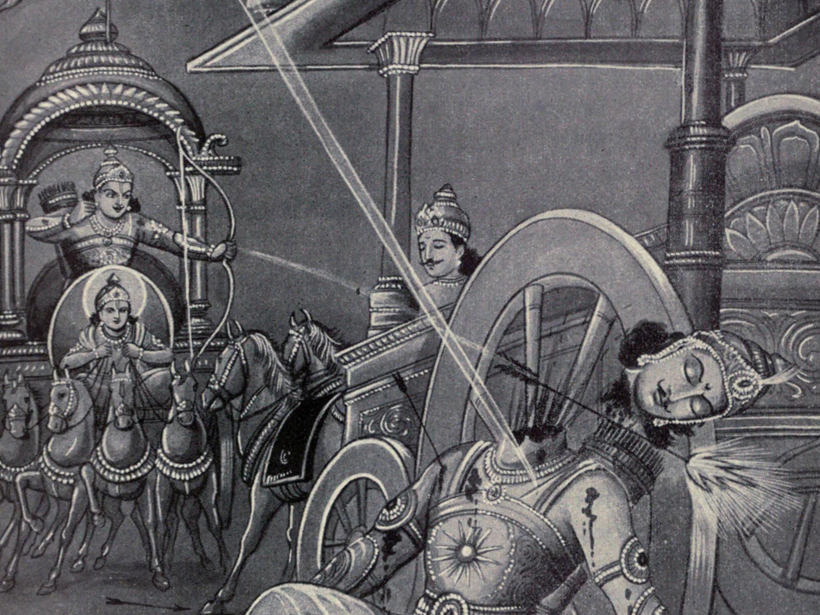Make History Fun Again: Quaint Math puzzles from ancient India
Work out these problems from the Lilavati, which young schoolchildren tried to solve a thousand years ago!
By Archana Garodia Gupta and Shruti Garodia
As you probably know, ancient Indian mathematics led the world for hundreds of years. India gave the world the decimal system and the zero, which allowed us to calculate enormous numbers. In fact, the largest name for a number that the ancient Greeks and Romans had was one “myriad”, which is just 10,000. So when poor Archimedes was trying to calculate the number of grains of sand in a box, he had to use myriad-myriad-myriad and so on!
We Indians, on the other hand, were simply in love with our zeroes, and had names for impossibly vast numbers. The number 10 followed by 25 zeros was a nagabala, while 10 followed by 62 zeroes was a mahaougha! (Of course, there were always many more Indian people to be counted…)
Especially of interest to children is Bhaskara II, one of ancient India’s most important mathematicians, who named his famous mathematics book, which is filled with playfully worded but tricky maths puzzles, after his young daughter, Lilavati.
Here are some real problems from the Lilavati (don’t worry, we found some easy ones for you!). Work them out, and imagine young schoolchildren sitting and solving the same questions 1,000 years ago!
(Scroll down for the answers at the end of the questions.)
Question 1:
“If three hundred mangoes can be bought in the market for 1 dramma, and thirty ripe pomegranates for 1 pana, tell me quickly, my little friend, how many pomegranates should be had in exchange for 10 mangoes?”
(Hint: 1 dramma was 16 panas; use proportionality)


Question 2:
“One-third of a collection of beautiful water lilies was offered to Shiva, one-fifth to Vishnu, one-sixth to Surya, and one-fourth to the Devi. The six that remained were presented to the guru. How many water lilies were there in all?”
(Hint: Use the Lowest Common Denominator to solve this linear equation)


Question 3:
“A snake’s hole is at the foot of a pillar, nine feet high, on top of which a hungry peacock is perched. It sees the snake gliding towards its hole from a distance that is exactly three times the height of the pillar. It pounces down in an exact hypotenus and catches the snake, both having travelled the same distance. How far away from the snake’s hole do they meet?”
(Hint: Use the Pythagorean theorem and whole square formula.)


Question 4:
This one is a little tricky, but fun!
“Arjun the Pandava was irritated in battle, and shot a quiver of arrows to slay Karna. Half of his arrows met those of his enemy, with four times the square root of the quiverful, he killed his enemy’s horses. With six arrows, he killed Karna’s charioteer; with three, he demolished his umbrella, standard and bow, and with the last one, he cut off the head of his foe. How many arrows did the son of Kunti let fly?”
(Hint: This is a quadratic equation. Isolate the square root term on one side and use the factoring method.)


ANSWERS
Answer 1:
300 mangoes =1 dramma
300 mangoes = 16 panas
300 mangoes = 16*30 pomegranates
10 mangoes = 16*30/30 pomegranates = 16 pomegranates
Answer 2:
Let x be the total number of water lilies
1/3*x + 1/5*x + 1/6*x + 1/4*x + 6 = x
20/60*x + 12/60*x + 10/60*x + 15/60*x + 360/60 = x
57x + 360 = 60x
3x = 360
x = 120
Answer 3:
Height = 9 feet
Distance of snake = 3*9 = 27
Peacock travels the distance of the hypotenus, and so does the snake
Width + Hypotenus = 27 => Hypotenus = 27 – Width
By Pythagoras’ Theorem,
Height2 + Width2 = Hypotenus2
92 + W2 = (27 – W)2
81 + W2 = 729 + W2 – 54W
54W = 648
Width = 12 feet
Answer 4:
Let x be the total number of arrows
1/2*x + 4*(x)1/2 + 6 + 3 + 1 = x
1/2*x – 4*(x)1/2 =10
[4*(x)1/2 ]2 =[1/2*x – 10]2 [Square throughout]
16x = 1/4x2 + 100 – 10x
1/4x2 -26x + 100 = 0
x2 – 104x + 400 = 0 [Multiply throughout by 4]
This is of the form
(x-a)(x+b) =0
x2– ax + bx –ab = x2 – (a-b) – ab
Where (a-b) = 104 and ab = – 400
Using factors,
a = 100; b = -4 [(a-b) = (100- – 4) = 104; ab = -400]
Solving for x, either
x-a = 0 or x+b = 0
x-100+100 = 100 or x-4 +4 = 4
x =100 or x = 4
But x cannot be 4, as there were definitely more than 10 arrows.
So x must be 100.
(For more fun stuff from India’s past, check out the newly released two-volume set, The History of India for Children Vol. 1 and Vol. 2, published by Hachette India, which is now available online and in bookstores across the country.)
Source: Read Full Article


